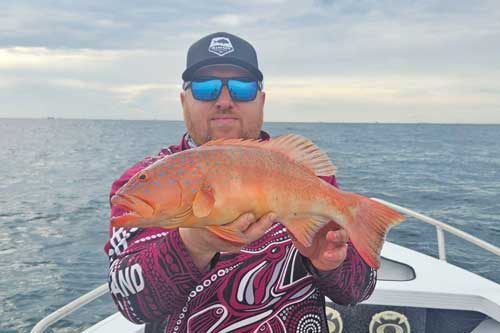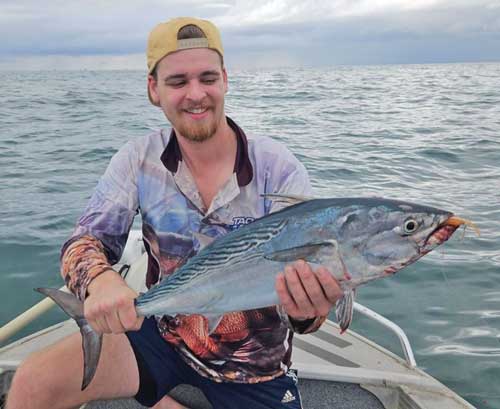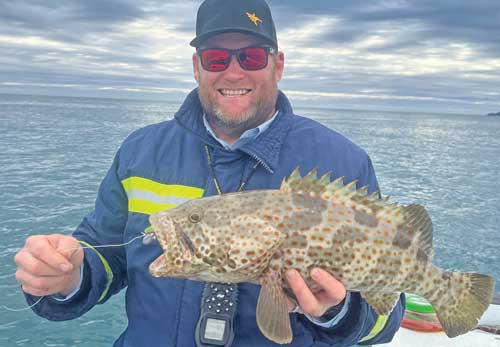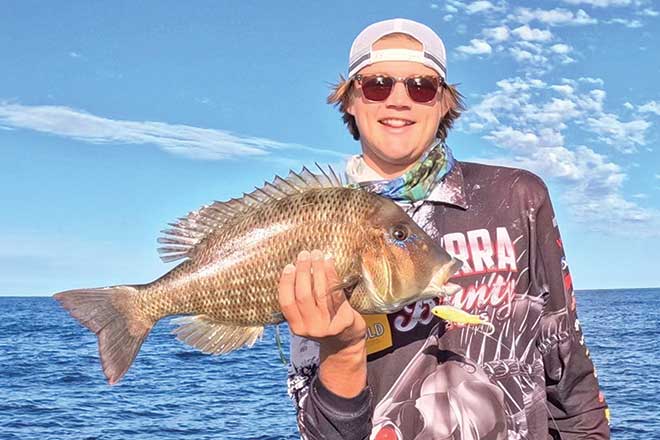Autumn has arrived and with it hopefully some reprieve from the constant heat we had during January and February. reefs
During February, strong wind was the norm, with only small breaks in the constant blustery conditions allowing people to sneak out wider.
This restricted most people to the harbour, rivers, creeks and inshore reefs and headlands around the region.
With any luck, as we move further into March, we will see longer periods of stable weather and less wind.
This month, I’ll touch a little more on the closer-in reef section around Curtis and Facing islands.
Some great fishing is to be found close by if you’re willing to put in the time and effort to find ground that doesn’t regularly see too much fishing pressure.
Facing Island has great reef structure around most of the outside of the island, with scattered smaller shallower reefs on the inside.
Most of the structure surrounding the island is obvious and a quick trip around the island at low tide will show where most of it starts and moves into deeper water.
Google Earth is a great tool and shows a breakdown of what reefs are close by Facing Island.
Most of these reefs run out to about 12-13m in depth from where they turn into more isolated patches of broken ground.

If you come across some of this isolated ground, typically it will have seen less fishing pressure and can hold slightly better quality fish.
Curtis Island is slightly different.
The structure around the bottom of the island is more scattered and doesn’t run as deep, typically finishing about 8-9m deep.
Spending some time sounding for more isolated bigger sections will pay off here, with better numbers and quality of fish.
If you’re travelling north along Curtis Island, you need to be aware of the zoning rules, with a big part of the coastline covered by a Green Zone.
Structure around both islands is not in the form of bommies and pinnacles but more broken rubble and rock with small coral formations.
It is surprising the number of coral trout that can be caught close by near the island, with fish between 40-55cm.
The most common size is from small to 45cm, and you will get the occasional fish that you won’t be able to handle and it finds its way home.
Grass sweetlip are another fish regularly taken in these areas, with fish up to 50cm common, though they typically range from 25-40cm.
Other species to find around here are stripies, tuskfish and the ever present and in plague proportions wire netting or honeycomb cod.

You will also find schools of tuna roaming this area, at most they are mack tuna, though the occasional school or longtail will pop up.
I use lures, and while almost anything will work, I do have my favourites.
My go-to lures include the ever faithful Berkley Gulp Shrimp, 4” and 5” jerk shads and 4” curly tails, as well as 80-100mm vibes.
Colour is a personal choice, yet white anything with red and natural clear colours have worked well for me.
Long drifts and staying over the top of your line vertically jigging have worked better than casting and retrieving – this technique allows me stay in contact with my line and gives the fish less slack line to get back to their home.
A good electric helps with this, especially in windy or faster current, but if you don’t have an electric, casting and retrieving will work just as well.
I tend to fish between the 8-12m range and find this is where most of my better-sized trout sit. reefs
Your typical barramundi gear will handle almost anything that’s thrown at you, with a leader size of 30-40lb suiting.
Moving closer in, smaller fish such as stripies, small trout and cod take over and make up most of your catch.
Other species that may pop up every now and then are snapper, small red emperor and moses perch.

Hopefully this will give you a few options to still get out and catch some fish next time the wind is blowing too hard to venture out wider.
Barra season opened at the start of February, with some cracking fish caught in the Fitzroy River and Port Alma.
The Fitzroy River barrage gates are open, with the floodwater pushing down from inland and the river running a nice chocolate colour.
Barramundi will still be caught in the town sections but, for the best results, I would be chasing some cleaner water around the port.
Locally, a few good barra have been caught since the start of February and while the weather stays warm, they will still be about, as will plenty of mangrove jack.
Fingers crossed, by the end of March, we might see some schools of blue salmon too.
Cheers and happy fishing from Gladstone. reefs
 Bush ‘n Beach Fishing Magazine Location reports & tips for fishing, boating, camping, kayaking, 4WDing in Queensland and Northern NSW
Bush ‘n Beach Fishing Magazine Location reports & tips for fishing, boating, camping, kayaking, 4WDing in Queensland and Northern NSW









